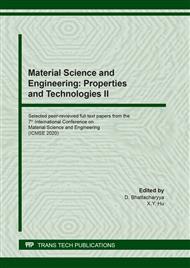p.33
p.39
p.45
p.51
p.57
p.65
p.71
p.77
p.87
Thermal and Vibration Mechanical Reliability of Multicoat Compound Thin-Film Thermocouple
Abstract:
For the thin-film thermocouple with ITO/In2O3 as the functional layer, the mechanical reliability of their composite multilayer membrane structures under high temperature and random vibration conditions are discussed. Using the elastic plasticity model based on the finite element simulation method, the stress and strain distribution patterns caused by the thermal mismatch and vibration of multilayer film materials are systematically analyzed, and the distribution of the stress concentration and strain accumulation regions that may lead to fatal reliability problems are characterized. When a thermal load of 1000 °C is applied, the protective layer of the structure is vulnerable to severe stress environment. In addition, plastic deformation occurs in the adjacent layers of the functional layer, making it a weak reliability area. The stress generated by the vibration load is much smaller than the thermal stress, which mainly occurs at the roots of the structure, where prolonged loading may lead to fatigue failure.
Info:
Periodical:
Pages:
57-63
Citation:
Online since:
April 2021
Authors:
Price:
Сopyright:
© 2021 Trans Tech Publications Ltd. All Rights Reserved
Share:
Citation:


